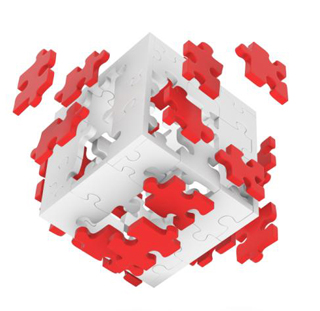Conversion rates for online retailers are generally considered pretty dismal by most common measures. Imagine if only 1–3 percent of shoppers entering your store ended up making a purchase. Maybe you’d think of trying a new strategy. The new strategy employed by many online retailers is called retargeting — the use of search and display campaigns to target the 97 percent of visitors who came to your e-commerce site but didn’t convert, meaning they did not make a purchase, fill out a form, or request a demo or call. Retargeting works by keeping track of people who visit your site and displaying your retargeting ads to them as they visit other sites online.
Topics: Big Data, Data Science, Analytics
Be careful what you wish for. Most of us probably heard that phrase at some point during our childhood, or perhaps even more recently. The point is valid. When wishing for something we tend to focus on the positives while ignoring the potential negatives. After all, who would wish for something that had a downside?
Topics: Big Data, Data Science, Analytics
With the help of technology and a hankering for local Big Data, Hyperlocal Data lets you be there without going there.
In a world where most things are only a click away, humans have a newfound appreciation for local knowledge. Farmers congregate at the local grain elevator to talk corn prices. Local growers and bakers gather to sell their goods (and eye the competition) at local farmers’ markets. You can judge a melon’s quality by the sound it makes when you tap it or a pineapple’s ripeness by how easy it is to pluck out a top leaf. There’s a lot of value in being in a place, in person, using all your senses.
Topics: Big Data
Data is like oxygen for a corporation. Just like we’re surrounded by the atmosphere, corporations live and breathe data. Likewise, as social, economic, and other spheres continue to produce data, it grows and moves and changes every second of every day.
As the breadth and depth of this corporate-owned intel vastly increases with technological advances, a pressing question facing the world of business is how to best leverage this huge, ubiquitous asset known as Big Data.
Topics: Big Data, Arnab Gupta, Signals, Data Equity
Increase Revenue and Improve Business Strategy with Retail Analytics
When people shop online, they know they’re sharing personal data to be collected and used for marketing purposes. And yet we’re surprised by how many companies fail to do even the bare minimum of analysis with the data they’ve painstakingly gathered. By implementing just a few basic analytics techniques into your marketing practices, you can quickly gain insight into your site’s performance, your customers’ satisfaction, and the effectiveness of your marketing campaigns. And if you take your analytics a few steps further, you can actually predict what your customers want and gain specific recommendations about how best to market to them — whether you have hundreds of customers or millions of them.
Here, we’ll show you the basic building blocks of retail marketing analytics. The insights gathered from these techniques can help you optimize business strategies and increase revenues. We’ll show you which metrics, or key performance indicators (KPIs), matter the most and how they can be used to measure the success of a retail enterprise. We’ll also shed some light on what’s possible once you establish the basics: the more advanced analytics techniques that deliver predictive insights and recommended actions. Your crash course starts now.
Topics: Big Data, Data Science, Analytics, Signals, Marketing
Data Science and ICD-10 Team Up to Benefit Healthcare
Switching to a new medical coding system won’t be easy, but when combined with data science and machine learning, ICD-10 presents enormous potential benefits for both the financial and the clinical sides of healthcare.
Part of why the healthcare industry is such a notorious laggard in jumping on the Big Data bandwagon is that every attempted change faces a huge domino effect, rendering many good ideas useless until everyone — and everything — is ready. One big step in the right direction, however, is an important upgrade to the computerized codes used for electronic medical records (EMR), which will take hold in the next year or two. These codes, known as ICD or International Classification of Diseases, determine what ailments patients have and how much they and their insurers should pay for a treatment. The set of codes, currently called ICD-9, is scheduled for its 10th revision this fall (but there may be a year-long delay). The updated codes, called ICD-10 codes, improve on the previous standard by adding more descriptive capabilities that will help healthcare professionals better categorize and keep track of patient disorders and treatments. Through the use of machine learning and other data science techniques, this increased granularity is expected to open up patient treatment analytics along with the ability to better monitor public health threats.
Topics: Healthcare, Big Data, Data Science, Machine Learning
Why Warehousing Data and Mining It Later Is No Longer Sufficient
Imagine trying to fill a thimble with water — from a fire hose. Unfortunately, if you’re still storing data with the once-good intention of mining it later, you might as well give it up. In this analogy, the wasted water represents not only the gushing, wasted data but also the enormous waste of time, money, and resources spent maintaining an outdated concept. Sure, your data warehouse if full, but full of what? If you’re only capturing a fraction of what is available, what are the chances that what you have is really valuable? And what valuable information are you letting go to waste?
Way back in 1982, Thomas Dolby famously quipped “She blinded me with science and hit me with technology.” While musical tastes have since changed, the sentiment is stronger than ever. Science, especially data science, can be an intimidating subject for marketers and other non-mathematicians.
Topics: Big Data, Data Science, Analytics, Marketing
It’s no longer enough to simply manage suppliers. Without a strong handle on everything that’s happening in your company’s supply chain, you will miss big savings opportunities.
In a recovering economy, procurement managers need to know more about how their organization's total supply chain works than ever before. As business starts to fire on all cylinders again, it’s clear things have changed. Not only are we experiencing the truly global, challengingly mercurial commercial landscape everyone talked about before the bust, but the need to keep a close eye on exactly what’s going on day to day has shattered old supply chain and procurement best practices — even from just a few years ago. But now, new spend analytics solutions offer impressive capabilities that allow supply chain managers both deep and wide views of their spend. With these tools, it’s possible to shine a spotlight on problem areas that were previously hidden in siloed expense reports, forgotten contracts, and operations with little or no oversight.
Topics: Big Data, Analytics, Supply Chain & Operations
The Frost & Sullivan Customer Value Leadership Award is presented each year to the company that has demonstrated excellence in implementing strategies that proactively create value for customers. It recognizes the company’s inordinate focus on enhancing the value that its customers receive, beyond simply good customer service, leading to improved customer retention and ultimately customer base expansion. Frost & Sullivan does not accept solicitations or applications for this award, instead basing its decisions on extensive private market research and confidential interviews with end users. Opera Solutions is proud to be the recipient of the 2013 Customer Value Leadership Award for Global Big Data Analytics.
Topics: Big Data, Competitions












